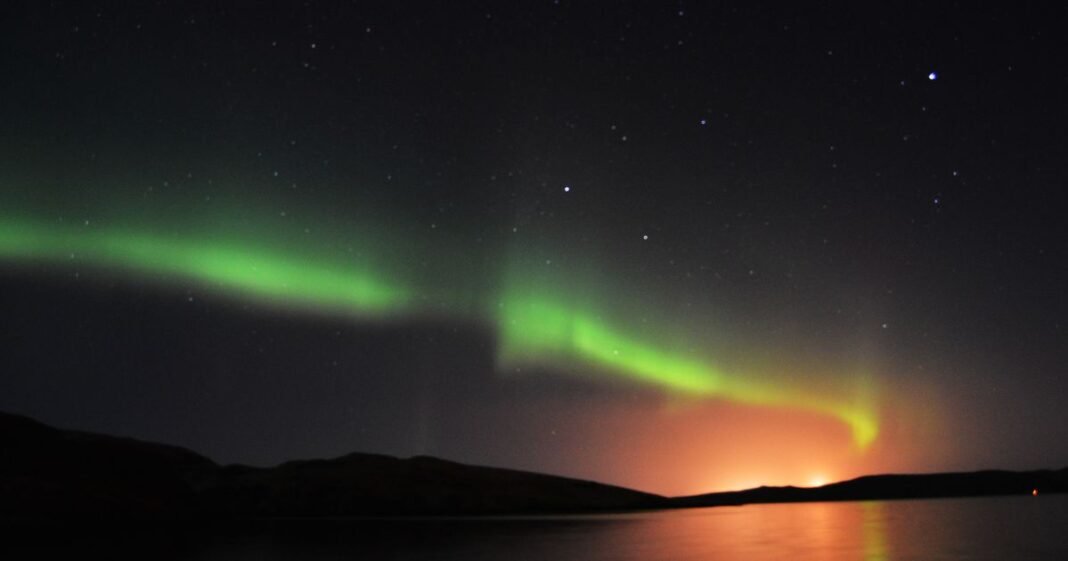A UK island has been identified as the prime location for observing the Northern Lights during the ongoing solar maximum that is illuminating the night skies with vibrant colors.
In the upcoming months, there is a high probability of witnessing the aurora borealis at its most magnificent, marking a peak opportunity for this decade to experience the dazzling displays that have graced the skies over the past two years as the sun’s 11-year cycle transitions.
Iceland’s leading airline, Icelandair, has shared expert advice to assist travelers in maximizing their experience during the aurora season and capturing breathtaking photos by making a simple setting adjustment on their iPhones.
Gísli S. Brynjólfsson, the Director of Global Marketing at Icelandair, emphasized the significance of latitude and darkness in viewing the Northern Lights. Shetland, situated as the most northerly part of the UK and renowned for its remote location, is highlighted as a top spot for aurora sightings.
Shetland, located approximately 100 miles from the northernmost point of mainland Britain, is known for the frequent appearances of the aurora, locally referred to as “mirrie dancers.”
Aside from the aurora spectacle, a visit to the Shetland Islands offers a range of attractions. Fans of the popular BBC detective series set on the island can explore Inspector Jimmy Perez’s local haunts. Additionally, Unst, the northernmost of the Shetland Islands, is now home to SaxaVord, Europe’s first fully licensed vertical launch Spaceport, set to launch rockets for satellite missions.
Travelers visiting Shetland towards the end of January, a prime time for Northern Lights sightings, can partake in the renowned Up Helly Aa fire festival, a celebration of Shetland’s Norse heritage featuring an impressive torchlit procession through Lerwick culminating in the burning of a Viking long ship.
Throughout the year, visitors to Shetland can marvel at the natural beauty of the island chain, characterized by rolling hills, expansive moors, and picturesque beaches frequented by seals.
The Met Office reports that the Northern Lights can also be visible across parts of mainland UK, particularly in Scotland, North England, North Wales, and Northern Ireland, during periods of heightened space weather activity. To monitor potential aurora displays, individuals are advised to check the Aurora Watch website for real-time updates on the sun’s geomagnetic activity and predictions on Northern Lights visibility in the UK.
Mr. Brynjólfsson highlighted that the peak viewing time for the Northern Lights in Iceland spans from September to March, coinciding with the darkest and shortest days of the year, offering optimal conditions for observing the aurora phenomenon.
For those planning a trip to Iceland, the Icelandic Met Office provides a Northern Lights forecast for the upcoming three days, detailing cloud coverage and the level of solar activity on a numbered KP index scale, ranging from 0 to 9.
In conclusion, Shetland emerges as the top UK destination recommended by Icelandair for experiencing the Northern Lights, promising a captivating and unforgettable natural spectacle.

